Fancy, Catchy Colors at "Schlager Move" 2012
500000 people celebrating in catchy colors the fancy 16th "Schlager Move" in Hamburg.
Best viewed in fullscreen-mode. If you can not see the embedded video, please follow this link.
Thanks for watching. You find a Flickr album with most of these pictures at
flickr.com/photos/hhackbarth/sets/72157630466984834/
Nikon D800E - das Pixelmonster

Nachdem mich bereits die NEX-7 von der Qualität der aktuellen Sony Sensor-Generation überzeugte, legte nun die mutmaßlich ebenfalls mit einem Sony Sensor bestückte Nikon D800/D800E im Vollformat-Bereich nochmals eine Schippe drauf. Sie erreicht mit 36,3 MP und einem Dynamik-Umfang von 14,4 Blenden (gemäß DxOMark Sensor Scores) bereits Leistungsdaten, die bislang Mittelformat-Kameras mit einem vielfach höheren Preissschild vorbehalten waren. Allein das ist schon Grund genug, sich die D800E genauer anzuschauen.
Update: Siehe Ende des Artikels!
Warum die D800E? Nikon liefert sein neues Pixelmonster in zwei Varianten aus. Die D800E unterscheidet sich von der D800 lediglich dadurch, dass ihr Sensor nicht mit einem Tiefpass-(Anti-Aliasing-)Filter bestückt ist. Der Hersteller weist allerdings daraufhin, dass die damit noch erzielte leichte Erhöhung der Pixelschärfe und Lichtempfindlichkeit, unter gewissen Umständen mit der Bildung von Moiré in feinen Texturen einhergehen kann. In der Praxis berichten die bereits mit dieser Kamera beglückten Nutzer allerdings, dass sie bislang selbst mutwillig diesen Effekt kaum herbeiführen konnten. Sofern Moiré doch einmal auftreten sollte, lässt es sich mit einigen darauf spezialisierten Werkzeugen (z.B. ab Lightroom 4 / Adobe Camera Raw 7) mit relativ geringem Aufwand entfernen, wie z.B. dieser Bericht zeigt. Wer also wirklich das Maximum an feinsten Details auch für sehr große Ausdrucke oder stark beschnittene Crops herausholen möchte, der wird vermutlich bereit sein, den Mehrpreis zu investieren. Dieser 1:1 Ausschnitt aus dem Titelbild dieses Beitrags zeigt bereits anschaulich, wie hoch die Auflösungsreserven dieser Kamera sind: 
(100% Crop aus dem Titelbild, aufgenommen mit dem AF-S Nikkor 50mm 1:1,4 bei F5.6 an der D800E)
Wahl der Objektive Die nächste Frage, die man sich i.d.R. stellt, nachdem man sich zur Kaufentscheidung durchgerungen hat, ist die Frage nach den "passenden" Objektiven. Eine Kamera mit einem derart anspruchsvollen Sensor stellt die Qualität der verwendeten Linsen auf eine harte Probe. Diese Feststellung machen seit einigen Jahren auch schon die Besitzer von MicroFourThirds- und NEX-Systemkameras, deren aktuelle Sensorgeneration hochgerechnet auf die Fläche eines Vollformat-Sensors bereits mehr als 60 MP auflösen und an denen viele "Altgläser" früherer Analogfilm-Kamerasysteme in mehrfacher Hinsicht nicht mehr den Anforderungen moderner Digital-Sensoren gewachsen sind, wie auch in diesem Beitrag zu sehen ist.
Ob die derzeit angebotenen Zoom-Objektive über den gesamten Zoombereich und bei Offenblende eine genügend hohe Auflösung bieten, wird derzeit von vielen in Frage gestellt. Da ich ohnehin eine Vorliebe für lichtstarke Festbrennweiten hege, entschied ich mich deshalb zu folgendem "Starter-Pack": 
V.l.n.r: AF-S Nikkor 24mm 1:1,4 G ED, AF-S Nikkor 85mm 1:1,8 G (2012er Modell) an der D800 E, AF-S Nikkor 50mm 1:1,4 G
Read more...

Some
weeks ago we announced a workshop titled "adorable 50s" that was
intended to compare a rich set of bright 50mm primes. Due to the crop of
APS-C and (Micro-)FourThirds sensors, these primes convert to typical
portrait focal lengths and provide the option to take photos indoor at
avalialable light without using a flash and to play with a thin
sharpness area. The comparison should allow you to judge sharpness &
contrast at open aperture as well as their characteristics how
out-of-focus structures in the background are rendered.
Here you find the results of the workshop but first a few words about how it was managed: The workshop was held in Hamburg under the direction of Helge Hackbarth together with the lovely model Lara-Dias. It included both an indoor comparison shooting at "avialable light" as well as an outdoor comparison under daylight conditions. A reflector was used in order to establish a good light balance between model and background - no flash at all! The locations were chosen with a versatile background structure in order to be able to assess the rendering of the out-of-focus blur (creaminess, bokeh, etc.) as well as contrast and sharpness of the model in the foreground.
Unfortunately three participants dropped out shortly, so that also some exciting lenses that were most welcome alongside the participants were missing (e.g. a Leica Noctilux 50/0.95 ASPH, a Voigtlander Nokton 50/1.1, a Canon 50/1.2 LTM, a Minolta MD Rokkor 50/1.2 and a Jupiter 3 LTM 50/1.5). Nevertheless, also the remaining selection gives already a good overview in which such the rather cheap and popular Olympus OM / Minolta MC Rokkor can be compared with upper end priced lenses like the Leica Summilux and a prototype of the SLR Magic HyperPrime 50mm CINE T0.95. The comparison candidates:
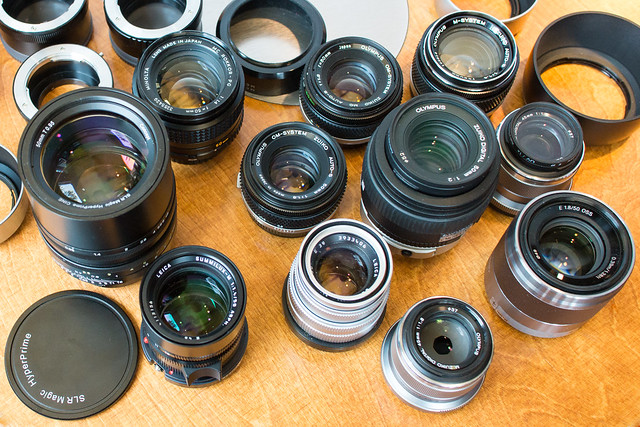
- SLR Magic HyperPrime CINE 50mm T0.95 (F0.92) (one of the currently available prototypes, click here for details)
- Leica Summilux 50mm F1.4 ASPH (M-Mount, E46)
- Minolta MC Rokkor 50mm F1.4
- Olympus OM 50mm F1.4 (OM-mount)
- Olympus OM 50mm F1.8 (OM-mount)
- Sony 50mm F1.8 OSS (SEL 50F18, E-Mount)
- Olympus M-Zuiko 45mm F1.8 (MiroFourThirds Mount)
- Leica Summicron 50mm F2.0 pre-ASPH (M-Mount, E39)
The
lenses were attached to a Sony NEX-7, a NEX-5n, an Olympos OM-D (E-M5)
and a PEN E-PL1. For the indoor shooting we created a meaningful setup
in a nice bar: 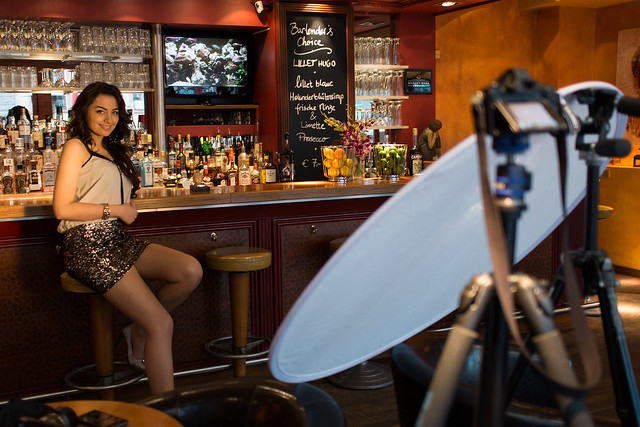
But
pictures speak louder than words. All images you see here, were taken
with the Sony NEX-7 and processed from RAW with identical settings for
contrast and sharpnes. Just some minor adjustments of white balance were
applied. In order to see other sizes you may click on the images:
Read more...
HyperPrime CINE meets Walpurgisnacht at Burgspektakel Bad Bodenteich
Contrasty Cuba
Impressions from Cuba 2012 - please take your time for this photo- & video-mix, you will not regret it!
This video was assembled from photos and video snippets taken in Cuba, March 2012 and demonstrates the potential of Sony's NEX-7 and current E-mount prime lenses.
Best viewed in fullscreen-mode. If you can not see the embedded video, please follow this link. The FullHD (1080p) version can be found here: vimeo.com/39946249. You can download the original video upload with better quality there as well.
Used cameras: Sony NEX-7, Panasonic Lumix GH2
Used lenses: Zeiss 24mm F1.8, Sony 50mm F1.8, SLR Magic CINE 50mm T0.95, SLR Magic 12mm T1.6 Thanks for watching. You find a Flickr album with most of these pictures at
flickr.com/photos/hhackbarth/sets/72157629726737761/
Fullsize comparison SLR Magic HyperPrime CINE 50mm T0.95 - Leica Noctilux 50/0.95 ASPH et al
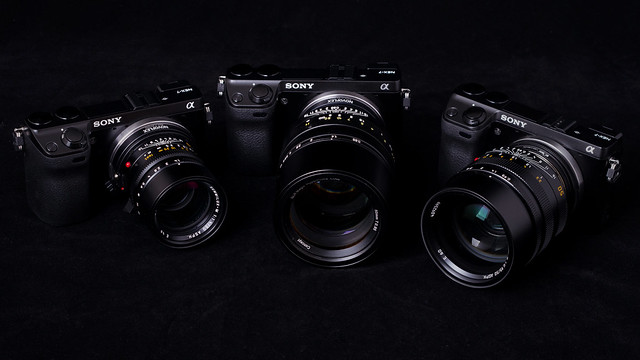
Beside the rolling review of the pre production sample of the SLR Magic HyperPrime CINE that you can read here, I decided to focus on a Leica Noctilux 0.95 ASPH - HyperPrime CINE T0.95 - Summilux 50/1.4 ASPH comparison in this particular article. So if you you want to get some general information about the CINE T0.95, please read the rolling review first. This comparison was taken unter soft "available light" conditions as this may probably be the main situation where you will use such a fast prime lens as well. It will be followed by comparisons under different lighting conditions as well. I compared the CINE with the Leica Noctilux 50/0.95 ASPH and the
Leica Summilux 50/1.4 ASPH. On the NEX-7 I compared to the Sony SEL 50F18 (50mm
F/1.8 OSS) as well and on the GH2 additionally to the Olympus M.Zuiko 45mm
F/1.8.
The images were taken from a tripod, the shutter was remotely
triggered. Focus was set on the hairs of the brush. The RAWs were developed with ACR'Adobe Camera Raw 6.6 with identical settings, only white
balance was adjusted a little bit seperately. Due to the slighty different focal length (the Leica seems to have
about 52mm), the camera was tilted a little bit in order to still keep the bottom
of the picture at the green "gras". The result was that the focus,
that was always adjusted to the brush's hair, is a little bit
shifted at the bottom.
First let us have a look at the pictures taken with the Panasonic Lumix GH2 (MicroFourThirds sensor with crop factor 2):Leica Noctilux @F0.95:

(Click for other sizes)
SLR Magic HyperPrime CINE @ T0.95 (F0.92): 
(Click for other sizes)
Read more...
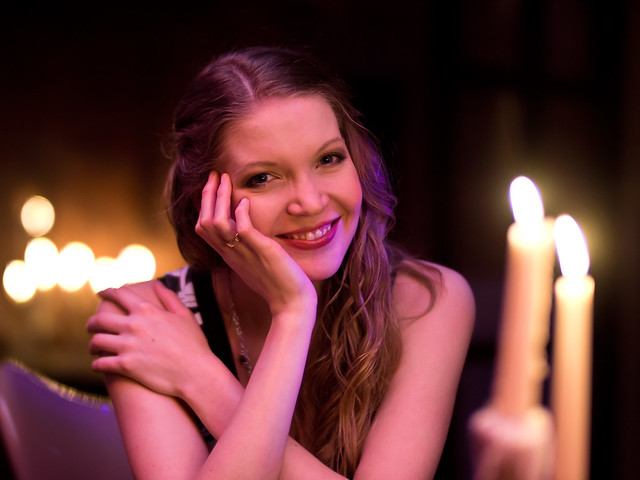
If you are a bokeh enthusiastic and love shooting at low light (flash - what is that?), here is something that may make you even more addictive. SLR Magic is going to launch a new 50mm lens, the HyperPrime CINE T0.95 that will push the limit to a new level. This rolling review will keep you informed and will be continously updated with more images, videos, experiences and comparisons. First let me state that I am not affiliated with SLR Magic, Leica or Sony, so you will see and read my pure personal impressions and opinions here. You may have heard already from SLR Magic's HyperPrime 50mm lenses and when first impressions of the CINE T0.95 were posted in the beginning of this year, I saw many people quite confused because they thought those reviews still adressed the 50m F0.95 lens that is already sold for some time under the NOKTOR label for MicroFourThirds and E-mount (Sony NEX). One of the reasons may have been that also the first prototypes of this new lens still carried the neon green ring, that Noktor lenses used to come with. But believe me: This new lens is a COMPLETELY different standard! The pre production sample that I received from SLR Magic already shows the final design (but carrying a "concept" mark) of the black ring version.

The new lens weighs about twice that much of the earlier model and
although it is designed as a professional cinema lens, there is
absolutely no doubt about it's qualities to be used for enthusiastic
photography as well. The aperture ring can be moved stepless and it is
calibrated in T-stops. It has no focus shift which
means the focus will not move when stopping down the lens. It has no breathing which means the focal length and so the angle
of view does not change when moving focus. The aperture blades close in a
very round circle so that bokeh still keeps those nice round circles of
confusion, when stopping down the lens - lights do not mutate to "stop signs"! The near distance is 0.7 meters (competitors like the Leica Noctilux usually start at 1m) which gives you some extra potential for creative usage of DOF.
So what means T0.95? As mentioned before, the aperture is calibrated in T-stops which is important for film makers that must make sure that the light transmission keeps the same when changing lenses at the same T-stop whereas F-stops only describe the calculated ratio of focal length and how wide the lens can open. Due to vignetting and other properties of the lens design, an F-stop of 0.95 typically results in a T-stop of 1.1 or so. Optically the lens is designed to have an F-stop of 0.92 at open aperture which makes it the fastest camera lens currently available for M-mount. This is possible due to an extremely large rear lens element:
Read more...
E 1.8/50 OSS is ... HOT! (Rolling Review)
15. Feb. 2012 - After a first shipment of the new E 1.8/50 OSS (SEL 50F18) reached German retailers, it's time for a first look. This rolling review will be continously updated with more images, experiences and comparisons. Now, as more and more fast prime lenses wit autofocus become avialable, the NEX system get's what it deserves since a long, hard time. Although SONY had good mirrorless bodies with excellent sensors already quite a long time, I could not get warm with that system so far. Meanwhile we have the excellent (but pricy) Zeiss Sonnar 24/1.8, the 30/3.5 macro and now the stabilized 50/1.8. As I especially like portrait photography, the latest member of the E-mount lens family was really an important milestone for me. This fast prime lens allows available light photography due to it's F1.8 aperture and optical stabilization as well as semiprofessional (or may be even professional) studio portrait photography in combination with the NEX-7 and it's 24 MP sensor and its option to trigger remote flashes. 
The E 1.8/50 OSS is ... HOT!
The first thing, people buying this sort of lens will be interested, is it's sharpness at open aperture in combination with its out-of-focus rendering (the bokeh). After I got this lens short before shop closing time, there was not much
time left for an extensive shooting and none of these lovely models
were at hand, that I have been working with during the last months. So I was attracted by this lovely little case for painters as it was displayed in front of a shop full of bookshelfs. This allowed me to test both aspects at the same time - so let us take a look at the original "out-of-cam" JPEGs: F4.0:
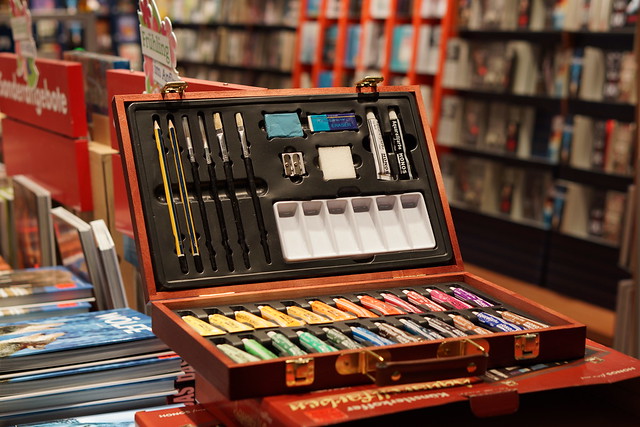
(click image for other sizes)
F1.8: 
(click image for other sizes)
As you can see in the 100% magnifications, the focused areas (e.g. the paintbrushes) are still pin sharp at open aperture. The bokeh in the out of focus areas is rendered quite well. Compared to the 50mm reference lens, the Leica Summilux 50/1.4 ASPH, you still see an advantage for the (10 times more expensive) Summilux, which has about half a stop wider aperture and is able to render a perfectly creamy bokeh. But the E 1.8/50 OSS can make some points with autofocus and optical stabilization which helps a lot in more agile situations. 
Read more...
|
|










































